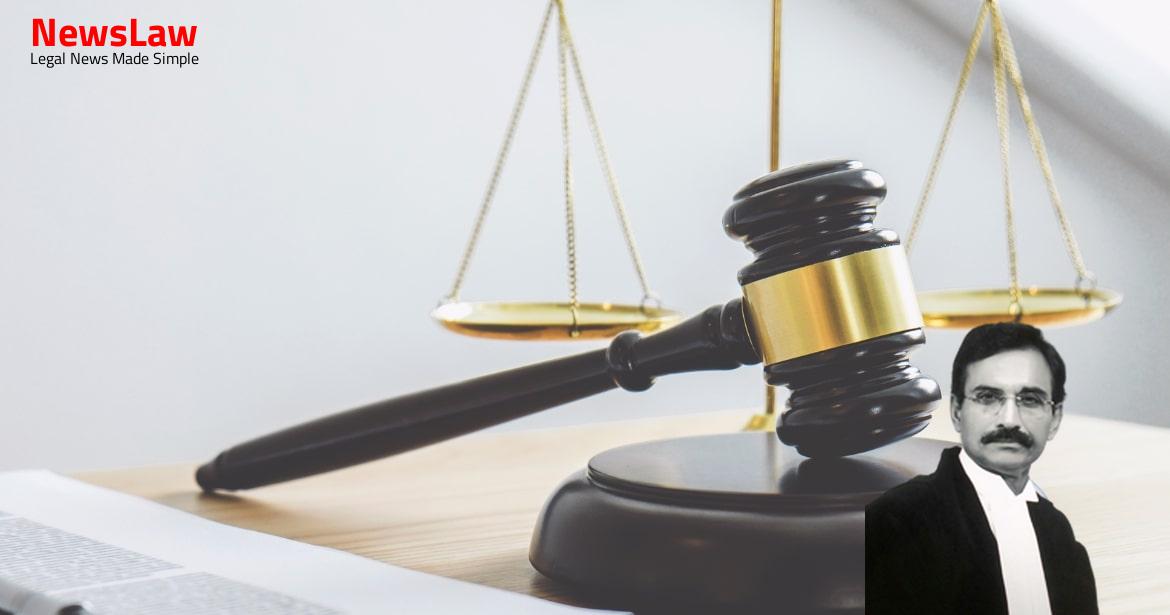In a significant legal development, the Supreme Court of India has intervened in a land acquisition dispute, overturning the High Court’s order. The case involves a dispute over compensation for acquired land, with the State of Himachal Pradesh and the Land Acquisition Collector directed to pay a specified amount to the beneficiaries. Stay informed about the latest updates in this complex legal matter.
Facts
- The High Court directed the Appellant to pay compensation as determined in the Supplementary Award, with the liberty to recover from JAL.
- The High Court failed to consider the Scheme between the Appellant and JAL, approved by NCLT, which stated JAL’s liability for all contingent liabilities.
- The High Court incorrectly stated that the Appellant had made payments under the Award, when it was actually JAL who made the payments.
- JAL had accepted liability for claims arising from the acquisition proceedings by making payments under the Award.
- The High Court misunderstood that JAL had not merged or transferred with the Appellant.
- JAL had entered into an agreement with the Appellant for the transfer of the cement project.
- The Appellant stated during the Writ Petition that they did not require the subject land for their projects.
- The Appellant had no need for the subject land as it was acquired for a safety zone surrounding the mining area for the cement project.
- The physical possession of the subject land remained with the villagers/landowners even after symbolic possession was handed over to JAL.
- The LAC issuing the Award after a substantial delay frustrated the purpose of acquisition for JAL.
- The Appellant had taken over the project but did not enjoy possession or benefit of the subject land.
- The land is being used for cement plant operations, but disputes arise concerning the rights of landowners.
- The liability for compensation should not be on the Appellant since they did not benefit from the subject land.
- The Scheme was approved by NCLT, transferring assets and liabilities to the Appellant from JAL in 2017.
- The State’s role was limited to initiating acquisition proceedings, with all costs borne by the company as per the MOU.
Also Read: In Re: Arbitration Petition No 19 of 2024
Issue
- The Supreme Court is considering four main questions in this part of the judgement
- The first question is whether the land and liabilities associated with it were transferred to the Appellant as per the Scheme
- The second question is about the entity legally responsible for paying the compensation determined in the Supplementary Award
- The third question pertains to whether the land can be returned to the original owners under Section 101 of the 2013 Act
- The fourth question focuses on the Effective Date of the Scheme and the liabilities associated with the subject land
Also Read: Important Judgment on Child Pornography Laws: Harish v. State of India
Arguments
- The senior counsel for the Appellant argued that the High Court’s order was erroneous in directing the Appellant to pay the compensation amount determined under the Supplementary Award.
- It was pointed out that both the initial Award and the Supplementary Award had been passed by the LAC, fixing the liability to pay compensation on JAL.
- JAL clarified that the cement project, including the acquired land, was handed over to the Appellant in 2017.
- The subject land was acquired for mining activities and safety zone for the cement project.
- The responsibility for maintaining the safety zone of the cement project lies with the entity operating the cement plant, which is now the Appellant.
Also Read: Interpretation of Group of Companies Doctrine in Indian Jurisprudence
Analysis
- The issue regarding the ownership of the subject land between the Appellant and JAL needs to be decided between the parties.
- Legal proceedings initiated before the Effective Date related to JAL Business and JCCL Business shall remain with the Transferor1 and Transferor2.
- Cases related to contingent liabilities, disputed claims, and guarantees shall be handled by Transferor1 and Transferor2.
- JAL’s contention that the Appellant should pay the amount under the Supplementary Award is rejected.
- Payment of compensation to landowners should precede taking possession of the acquired land.
- Compulsory acquisition was necessary for the safety of the original landowners, as per the Award of 2018.
- State of Himachal Pradesh failed to ensure timely payment of compensation to the landowners.
- Acquisition of the subject land was for a safety zone for the mining area of the cement plant.
- Delay in payment of compensation post acquisition is against the constitutional principle of a welfare state.
- Application of Section 101 of the 2013 Act for unutilized land was discussed, and it was found that the land was in use for the cement project.
- Ownership of the subject land continued to be with JAL, despite the Scheme coming into effect.
- Appellant cannot be directed to pay compensation for land not in its ownership or possession.
- Failure to complete compensation determination before taking possession contravened Section 38(1) of the 2013 Act.
- The right to property is now considered a constitutional, statutory, and human right.
- Statutory authorities are legally bound to pay adequate compensation and rehabilitate persons affected by land acquisition in a welfare state.
- The State must pay compensation immediately once determined, without requiring a request from the landowners.
- The Government of Himachal Pradesh, as a welfare State, should ensure prompt payment of compensation in land acquisition cases.
- The Right to Property in India consists of multiple intersecting rights, including notice, right to be heard, reasoned decision, public purpose requirement, fair compensation, efficient acquisition process, and conclusive decision.
- A fair and reasonable compensation is essential for any acquisition process.
- The importance of following timelines and expeditiously disbursing compensation has been emphasized by the court in various cases.
- The use of special powers under Section 17(4) of the 1894 Act extinguishes the landowners’ right to raise objections under Section 5A, shifting corresponding duties to the State.
- The State cannot avoid its responsibility of compensating landowners by claiming a limited role in acquisition proceedings.
- Section 41 of the 1894 Land Acquisition Act requires an agreement between the appropriate government and the company for the acquisition of land.
- The agreement must include provisions for payment of the acquisition cost to the government by the company.
- It also mandates the transfer of the land to the company upon payment.
- The State shall recover the amount from JAL as the liability to pay for the acquisition of the land falls on JAL.
- The land was transferred to JAL before the compensation amount could be determined, which is against the provisions of Section 38 of the 2013 Act and Section 41 of the 1894 Act.
Decision
- The total amount paid by the State to be recovered from JAL
- State of Himachal Pradesh and Land Acquisition Collector directed to pay Rs. 3,05,31,095 to the beneficiaries
- The appeal is allowed, and the High Court’s order is set aside
- Rs. 3,05,31,095 along with 9% interest to be paid within fifteen days
Case Title: M/S ULTRA TECH CEMENT LIMITED Vs. MAST RAM (2024 INSC 709)
Case Number: C.A. No.-010662-010662 – 2024



